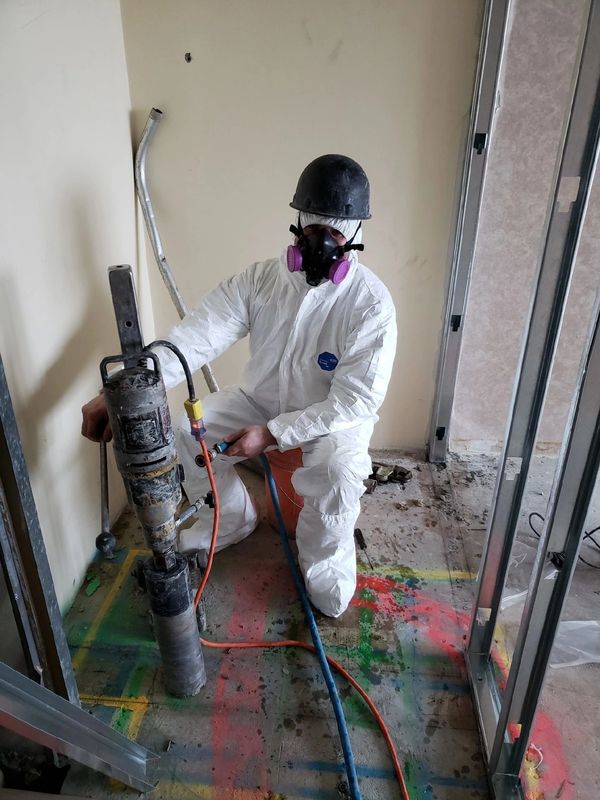Beyond the Surface Area: Leveraging Advanced Concrete Scanning Techniques for Unmatched Accuracy and Understanding
Advanced concrete scanning methods have emerged as vital devices in this quest, providing a glance underneath the surface area to unveil a globe of vital insights. By using innovative technologies, specialists can discover abnormalities, examine the condition of concrete frameworks, and make informed choices that shape the program of projects.
Value of Advanced Concrete Scanning
The importance of making use of advanced concrete scanning strategies depends on the unmatched precision they supply for discovering sub-surface abnormalities and guaranteeing architectural stability. By using cutting-edge modern technologies such as ground-penetrating radar (GPR), electromagnetic induction, and advanced sonar imaging, building and construction experts can dive below the surface area of concrete frameworks with a level of precision that much exceeds traditional assessment approaches. Concrete Scanning. These techniques make it possible for the recognition of covert dangers like rebar rust, gaps, conduits, or post-tension cords that can compromise the stability and security of a structure gradually
Moreover, advanced concrete scanning supplies invaluable insights into the general problem of a concrete component without the need for intrusive steps, decreasing the danger of creating damage during the evaluation process. The capability to identify the specific area and deepness of possible concerns permits targeted repairs and maintenance, ultimately prolonging the life expectancy of the structure and enhancing its performance. Fundamentally, the value of sophisticated concrete scanning can not be overemphasized in the world of building and facilities upkeep, where accuracy and integrity are extremely important.
Sorts Of Cutting-Edge Technologies

Anomalies and Flaw Discovery

In enhancement to GPR, concrete scanning strategies like thermography and impact-echo testing are also effective in spotting anomalies and defects. By leveraging these advanced strategies, experts can proactively address architectural problems, ensuring the long life and security of concrete structures.
Assessing Concrete Condition
Exactly how can designers accurately assess the problem of concrete structures to guarantee their longevity and security? Numerous sophisticated concrete scanning strategies are employed for this objective. Ground-penetrating radar (GPR) is commonly made use of to examine the internal structure of concrete, spotting gaps, fractures, and other abnormalities that may endanger its strength.
In addition, visual assessment continues to be an essential component of concrete condition evaluation. Designers aesthetically analyze the surface area for indicators of wear and tear, such as spalling, splitting, or staining. Combining non-destructive testing approaches with aesthetic evaluations permits a thorough assessment of concrete condition, making it possible for designers to identify potential problems beforehand and implement timely maintenance or repair services. By leveraging these advanced methods, designers can make sure the lasting resilience and security of concrete structures.
Enhancing Decision-Making Processes
In the world of framework administration, optimizing decision-making procedures is necessary for making certain the reliable upkeep and durability of concrete structures. Improved decision-making procedures in concrete administration include using sophisticated scanning techniques to collect thorough Full Article information on the condition of structures. By leveraging technologies such as ground-penetrating radar and 3D imaging, stakeholders can make enlightened choices relating to repair work, support, or replacement techniques.
These advanced scanning strategies supply important understandings right into the internal make-up of concrete, determining potential concerns such as spaces, splits, or rust that may not show up on the surface. This degree of in-depth information enables positive upkeep planning, minimizing the danger of structural failings and increasing the total lifespan of concrete structures.
Moreover, by including digital documents and evaluation tools into the decision-making process, stakeholders can track the evolution of concrete conditions gradually, making it possible for predictive upkeep techniques and maximizing resource appropriation. Ultimately, the assimilation of advanced concrete scanning methods enhances decision-making processes by giving unrivaled More Bonuses precision, insight, and effectiveness in framework management.
Final Thought
In verdict, advanced concrete scanning methods supply exceptional precision and understanding in spotting abnormalities, defects, and evaluating the condition of concrete structures. By leveraging cutting-edge modern technologies, decision-making processes can be enhanced, causing even more effective and educated remedies for keeping and repairing concrete infrastructure. These methods play a vital duty in ensuring the security and durability of concrete frameworks, making them a crucial device in the field of construction and engineering.
Furthermore, advanced concrete scanning supplies vital understandings right into the general condition of a concrete component without the demand for intrusive steps, lessening the threat of causing damages during the assessment procedure - Concrete Scanning. Another ingenious technology is 3D X-ray scanning, which gives comprehensive images of the interior structure of concrete, using important details without the requirement for harmful testing. In Addition, Concrete Cover Meters are Continue used to gauge the density of concrete cover over reinforcement bars accurately. Boosted decision-making processes in concrete administration include using sophisticated scanning techniques to collect thorough information on the condition of frameworks.In verdict, advanced concrete scanning methods use unparalleled precision and understanding in finding abnormalities, problems, and assessing the problem of concrete structures